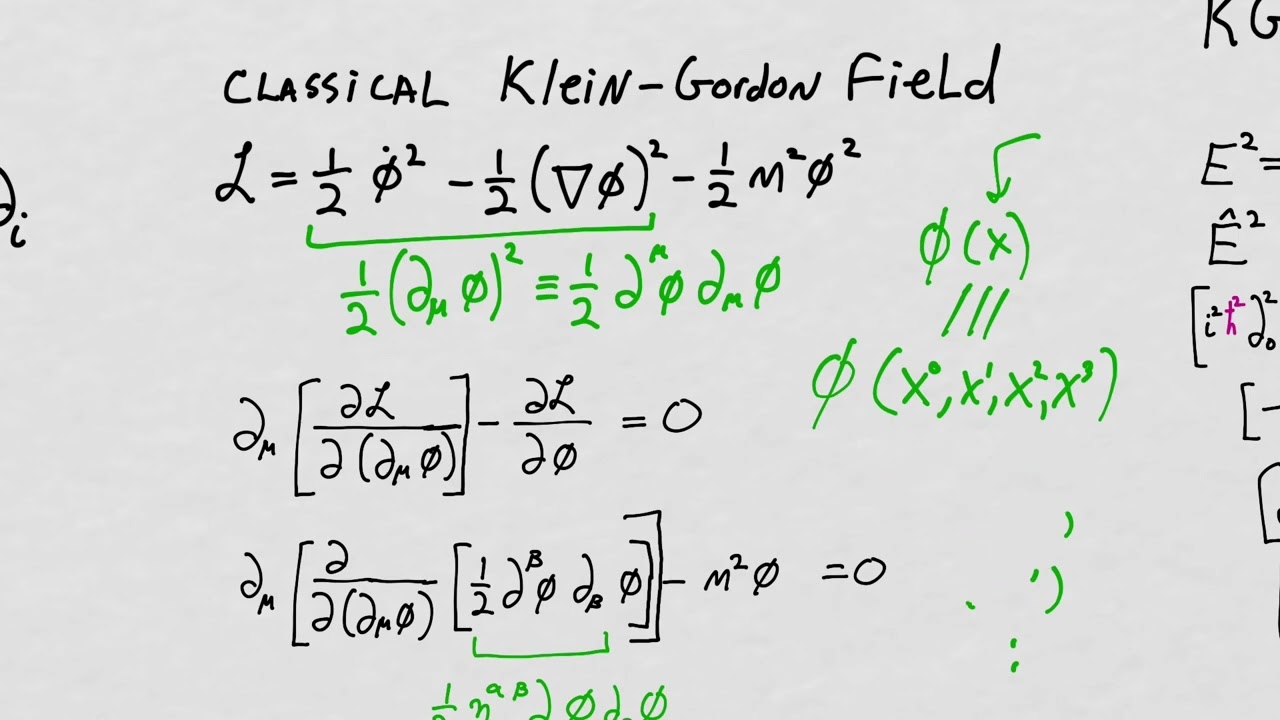
What is the Klein-Gordon equation? The Klein-Gordon equation is a fundamental equation in quantum mechanics and quantum field theory. It describes scalar particles, which are particles without spin, like the Higgs boson. This equation is a relativistic version of the Schrödinger equation, meaning it takes into account the principles of Einstein's theory of relativity. It’s crucial for understanding how particles behave at high speeds, close to the speed of light. The equation itself is a second-order partial differential equation, making it more complex than the Schrödinger equation. Despite its complexity, the Klein-Gordon equation is essential for modern physics, providing insights into particle behavior and interactions.
What is the Klein-Gordon Equation?
The Klein-Gordon equation is a fundamental equation in quantum mechanics and field theory. It describes scalar fields and is a cornerstone in understanding particle physics. Here are some intriguing facts about this equation.
-
The Klein-Gordon equation is a relativistic version of the Schrödinger equation, accounting for the principles of special relativity.
-
It was named after Oskar Klein and Walter Gordon, who independently formulated it in the 1920s.
-
The equation is second-order in both space and time, unlike the Schrödinger equation, which is first-order in time.
-
It can describe particles with zero spin, such as the Higgs boson.
-
The equation is written as: ((Box + m^2)phi = 0), where (Box) is the d'Alembertian operator and (m) is the mass of the particle.
Historical Context
Understanding the historical backdrop of the Klein-Gordon equation provides insight into its significance and development.
-
The equation was developed during a period of rapid advancements in quantum mechanics and relativity.
-
It was one of the first attempts to reconcile quantum mechanics with special relativity.
-
Initially, the equation faced criticism for predicting negative probability densities, which seemed unphysical.
-
Despite early skepticism, it laid the groundwork for the development of quantum field theory.
-
The equation's formulation was influenced by the work of Schrödinger, Dirac, and other pioneers of quantum mechanics.
Mathematical Properties
The Klein-Gordon equation has unique mathematical properties that distinguish it from other equations in physics.
-
It is a hyperbolic partial differential equation, which means it describes wave-like phenomena.
-
The equation is Lorentz invariant, ensuring it holds true in all inertial reference frames.
-
Solutions to the equation can be expressed in terms of plane waves, which are fundamental in wave mechanics.
-
The equation can be solved using Green's functions, which are powerful tools in mathematical physics.
-
It admits both real and complex solutions, allowing for a wide range of physical interpretations.
Physical Interpretations
The Klein-Gordon equation has profound implications for our understanding of the physical world.
-
It describes scalar fields, which are essential in particle physics and cosmology.
-
The equation can model the behavior of mesons, a type of subatomic particle.
-
It plays a crucial role in the theory of quantum fields, which describes the interactions of particles.
-
The equation is used to study the propagation of scalar waves in various media.
-
It provides insights into the nature of mass and energy in the context of relativity.
Applications in Modern Physics
The Klein-Gordon equation remains relevant in contemporary physics research and applications.
-
It is used in the study of quantum field theory, which underpins the Standard Model of particle physics.
-
The equation is applied in cosmology to model the early universe and inflationary scenarios.
-
It helps in understanding the behavior of scalar fields in black hole physics.
-
The equation is utilized in the study of solitons, which are stable, localized wave packets.
-
It has applications in condensed matter physics, particularly in the study of Bose-Einstein condensates.
Challenges and Criticisms
Despite its importance, the Klein-Gordon equation has faced various challenges and criticisms.
-
The equation's prediction of negative probability densities led to the development of the Dirac equation for fermions.
-
It does not account for spin, limiting its applicability to scalar particles.
-
The equation's solutions can exhibit singularities, which pose challenges for physical interpretation.
The Klein-Gordon equation remains a cornerstone of theoretical physics, offering deep insights into the nature of particles and fields.
Final Thoughts on the Klein-Gordon Equation
The Klein-Gordon equation stands as a cornerstone in quantum field theory and relativistic quantum mechanics. Its significance extends beyond theoretical physics, influencing areas like particle physics and cosmology. Understanding this equation helps grasp the behavior of scalar fields and bosons, essential for modern physics.
Despite its complexity, the equation's applications are vast, from explaining particle interactions to contributing to string theory. Its role in describing wave functions of particles with zero spin highlights its importance.
For students and enthusiasts, diving into the Klein-Gordon equation opens doors to a deeper appreciation of the universe's fundamental workings. Whether you're a budding physicist or just curious, this equation offers a glimpse into the intricate dance of particles and fields that shape our reality.
Was this page helpful?
Our commitment to delivering trustworthy and engaging content is at the heart of what we do. Each fact on our site is contributed by real users like you, bringing a wealth of diverse insights and information. To ensure the highest standards of accuracy and reliability, our dedicated editors meticulously review each submission. This process guarantees that the facts we share are not only fascinating but also credible. Trust in our commitment to quality and authenticity as you explore and learn with us.
